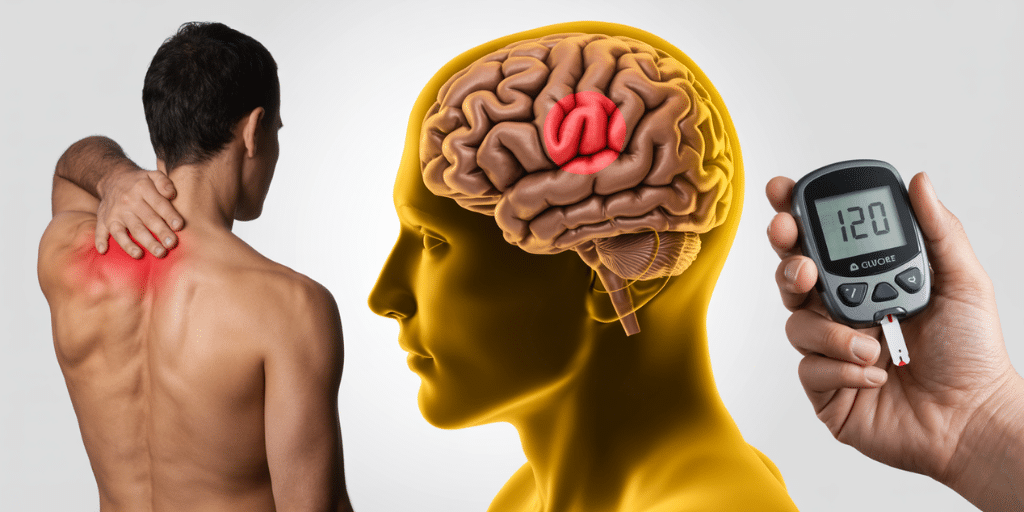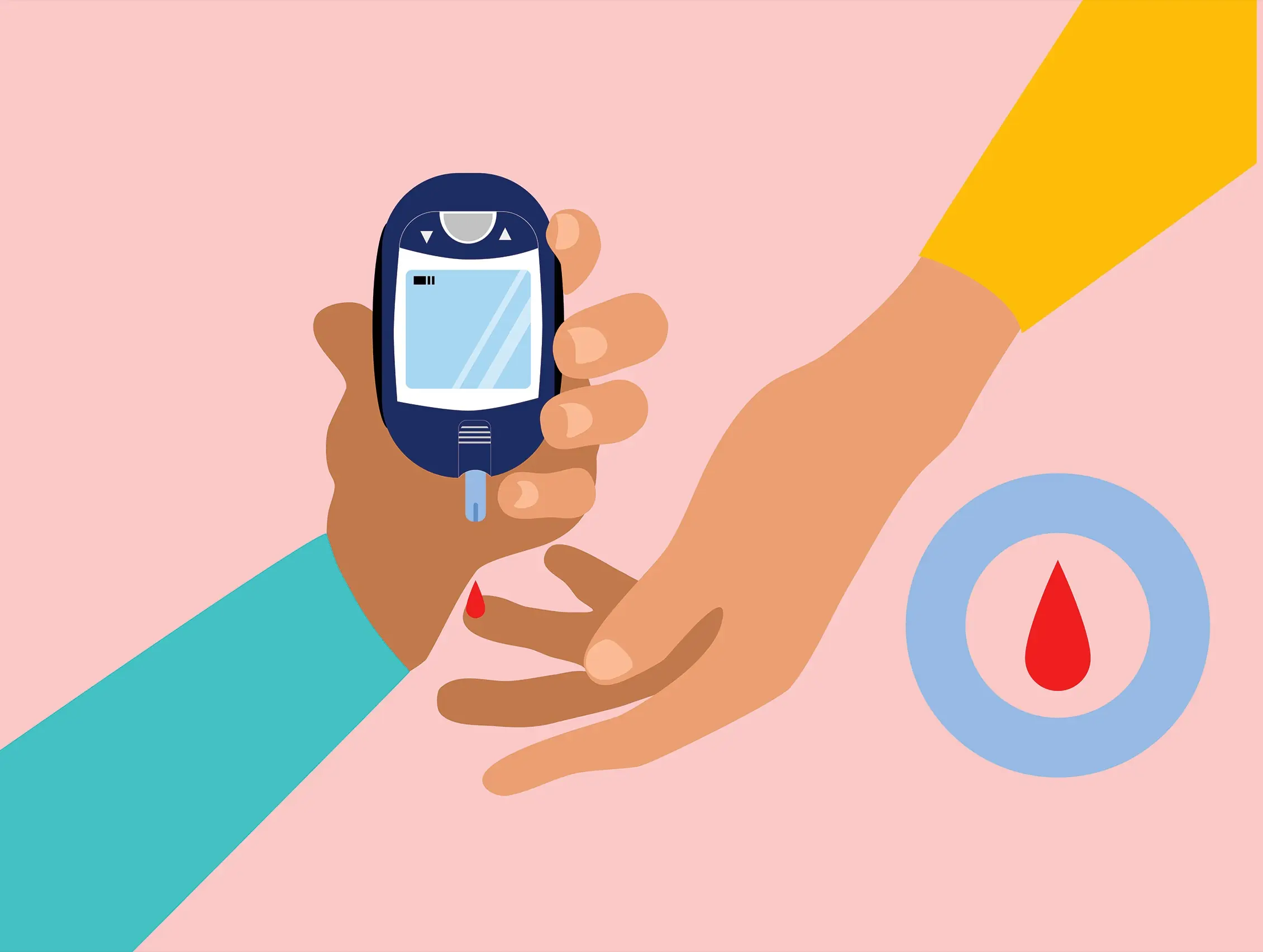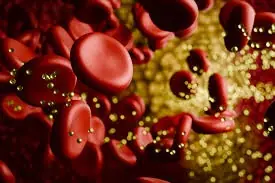
7 silent signs of high blood sugar most people miss
Warning Signs of High Blood Sugar: What You Need to Know to Protect Your Health 
Do you often feel excessively thirsty, tired, or irritable? While these symptoms may seem like a result of stress or a poor night's sleep, they could actually be subtle signs that your blood sugar is out of control. These are some of the earliest indicators of unstable blood sugar, which could point to high blood sugar, prediabetes, or even full-blown diabetes. Recognizing these signals early can help you address the issue before any lasting damage occurs.
Surprisingly, 50% of older adults have altered blood sugar, prediabetes, or diabetes, and many don’t even realize it. As they remain unaware, a silent process of damage is happening inside their bodies—affecting their eyes, brain, kidneys, heart, and arteries. Too often, individuals discover the issue too late. In this article, we'll outline the key warning signs your body may be giving you, explain how to understand your blood lab reports, and most importantly, share what you can do today to improve your blood sugar levels naturally. (Based on the expertise of Dr. Juan I. Veller)
Key Takeaways
-
Classic Symptoms: Excessive thirst and frequent urination are the most common signs of high blood sugar, as your kidneys work overtime to eliminate excess glucose.
-
Hidden Signs: Unexplained mood swings, insatiable hunger, and chronic fatigue are all linked to fluctuating blood sugar levels.
-
Know Your Numbers: Understanding your lab results is crucial. A fasting glucose level between 100-125 mg/dL suggests prediabetes, while levels of 126 mg/dL or higher indicate diabetes. The Hemoglobin A1c test reflects a three-month average of your blood sugar levels.
-
Inflammation is Key: Chronic inflammation, often caused by visceral fat, is a leading factor in insulin resistance, which leads to type 2 diabetes.
-
You Can Take Control: By adopting healthy lifestyle changes—prioritizing your health, regular exercise, and an anti-inflammatory diet—you can manage and even reverse prediabetes and type 2 diabetes.
1. Constant Thirst (Polydipsia) 
Do you feel like you’re always thirsty, no matter how much water you drink? This condition, known as polydipsia, is a common sign of high blood sugar. Here’s why: As glucose (sugar) circulates in your bloodstream, your kidneys work to filter it out and prevent it from spilling into your urine. If your blood sugar levels rise to 180 mg/dL or higher, your kidneys can’t reabsorb all the glucose. As a result, the excess sugar is excreted in your urine, which pulls large amounts of water with it. This process leads to dehydration, signaling your brain to increase thirst to replenish lost fluids.
2. Frequent Urination (Polyuria) 
Along with constant thirst, you may find yourself running to the bathroom more often. This happens because your kidneys are trying to get rid of the excess glucose in your body. The sugar attracts water, causing your bladder to fill up more quickly. This leads to frequent trips to the bathroom, even during the night, disrupting your sleep and creating a cycle of dehydration and increased thirst. In some cases, a urine lab report might show "glucosuria," meaning there’s glucose in your urine, confirming that your body is losing sugar this way.
3. Unpredictable Moods 
Have you noticed sudden mood swings or irritability for no clear reason? It could be related to your blood sugar levels. When your blood sugar spikes and crashes, it disrupts the balance of chemicals in your brain, which can lead to feelings of anxiety, irritability, or even depression. This is a common issue for people with unstable blood sugar, but it’s often overlooked. It’s not about personality; it’s about how your body’s blood sugar levels are impacting your mood.
4. Constant Hunger (Polyphagia) 
If you’ve ever felt extremely hungry right after eating, you might be dealing with high blood sugar and insulin resistance. In those with unstable blood sugar, the body’s hunger signals, controlled by a hormone called leptin, can get disrupted. When insulin resistance occurs, leptin resistance often follows, meaning your brain isn’t receiving the signal that you’re full. This leads to constant hunger, which drives you to eat more, often craving sugary or high-carb foods, leading to a cycle of blood sugar spikes and crashes.
5. Chronic Fatigue 
Persistent fatigue is another common symptom of high blood sugar. Even after a full night’s rest, you feel drained and sluggish. This happens because your body is full of sugar (glucose), but due to insulin resistance, your cells aren’t able to use it for energy. Essentially, the fuel is stuck in your bloodstream, unable to reach the cells that need it. This lack of energy makes it harder to exercise, which would help manage your blood sugar. Additionally, disrupted sleep from frequent urination and the impact of stress hormones like cortisol make fatigue even worse.
6. Understanding Your Blood Work: Are You Prediabetic or Diabetic? 
If you're noticing several of these symptoms, it’s time to take a look at your blood test results. The most common tests you should focus on are:
-
Fasting Glucose: This test measures your blood sugar after fasting for at least 8 hours. A normal level is below 100 mg/dL. A result between 100 and 125 mg/dL indicates prediabetes, while anything above 126 mg/dL suggests diabetes. If two separate tests show high levels, you are considered diabetic.
-
Hemoglobin A1c (HbA1c): This test provides an average of your blood sugar levels over the past three months, offering a clearer picture of long-term blood sugar control. High A1c values indicate prediabetes or diabetes, even if your fasting glucose seems normal.
7. The Role of Inflammation and Belly Fat 
You don’t have to be overweight to have inflammation or insulin resistance. Even small amounts of belly fat, called visceral fat, are a major concern. This type of fat surrounds your internal organs and releases inflammatory substances into your body. These substances worsen insulin resistance and increase hunger, leading to a vicious cycle that fuels high blood sugar and contributes to serious health issues like heart disease and diabetes.
How to Fight Back: 3 Key Strategies 
While the consequences of unmanaged diabetes are serious, the good news is that you have the power to take action. If you’re prediabetic, you can reverse it, and even if you’re diabetic, you can manage the condition with a few lifestyle changes.
-
Prioritize Your Health: Your health should always come first. If you don’t make time for it, you could end up with serious complications that stop you from living your life. Make your health your number one priority.
-
Stay Active: Aim for 30-40 minutes of exercise daily. Exercise helps control blood sugar by allowing your muscles to absorb glucose for energy. If you don’t have time for a workout, integrate movement into your daily routine, such as taking the stairs, parking further away, or standing every hour.
-
Eat Anti-Inflammatory Foods: Focus on foods that reduce inflammation, such as green tea, water infused with lemon or rosemary, and healthy fats like olive oil and fatty fish. Avoid sugary drinks, processed foods, and refined oils that contribute to inflammation and insulin resistance.
A Final Word on Metformin
If you’ve been prescribed metformin for diabetes, it can be very effective when used properly. However, it’s important to remember that metformin is not a cure. It’s most effective when combined with smart lifestyle changes, such as healthy eating and regular exercise. By taking a balanced approach, you can manage your blood sugar and improve your overall health.
News in the same category


Nighttime Habits That Increase Your Risk of Stroke

4 Signs Your Kidneys Might Be in Serious Trouble

The Potent Remedy: Turmeric and Honey as a Natural Antibiotic

If Your Legs Cramp at Night, You Need to Know This Immediately!

Why You Should Always Close Your Bedroom Door Before Going to Sleep

The FIRST Sign of HIGH BLOOD SUGAR Is…

The Shocking Effects of Sleeping Less Than 7 Hours

Scientists Have Discovered a “Kill Switch” in The Body That Can Destroy Any Cancer Cell

Snoring Isn't Just Annoying: It Could Be a Serious Health Warning

Scientists Have Proven That Negativity Makes Cancer Grow Inside The Body

The #1 mineral deficiency linked to strokes (and how to fix it)

Tonsil Stones: Causes, Symptoms, and Natural Remedies

Your Heart Emits a Magnetic Field 100x Stronger Than Your Brain – And It Can Be Detected 3 Feet Beyond Your Body

How Your Body Secretly Tells You You're Stressed

New Study Shows That Sitting in Silence for Only Two Hours Can Trigger Significant Growth in New Brain Cells

Foods That Can Quietly Drain Calcium From Your Body

Just Simply Looking at a Sick Person Is Enough to Trigger Your Immune Response, Study Shows

Scientists Discover an “Off Switch” for Cholesterol — And It Could Save Millions of Lives
News Post

How to Cook Sticky Rice Without Soaking Overnight: Soft, Chewy, and Super Fast

How to Unclog a Sink Drain Without Calling a Plumber

Expiring Food: Should You Buy It or Not? The Answer Might Be the Opposite of What You Think

Couple’s Walk Leads to a Rare $70,000 Ambergris

Woman Experiences Intense Leg Pain, Discovers She Has a Rare Ancient Disease Once Called ‘Holy Fire’

Homemade Baking Soda Cream: Say Goodbye to Wrinkles and Dark Spots

Goodbye, Blood Sugar! A Simple Natural Drink That Helps Balance Glucose Levels

Tomato Benefits for Skin – Rub Tomato Slice on Face

Science Reveals How This Physical Trait May Indicate Narcissism

Nighttime Habits That Increase Your Risk of Stroke

Add a few drops of essential oil to the water used to clean the floor. Knowing the benefits, every family wants to follow suit.

Put garlic at the bedside, its "golden" uses, anyone who reads this will want to try it.

Honey, Lemon, Onion, Garlic & Ginger: The Daily Spoonful That Works Wonders

Vitamin E Oil uses for Skin – Glowing Skin, Dark Circles & Wrinkles

4 toxic plastic items

The Chicken Seller Said: "These 3 Types of Chicken Meat, No Matter How Cheap They Are, I Never Buy..."

4 Signs Your Kidneys Might Be in Serious Trouble

The Potent Remedy: Turmeric and Honey as a Natural Antibiotic

If Your Legs Cramp at Night, You Need to Know This Immediately!
